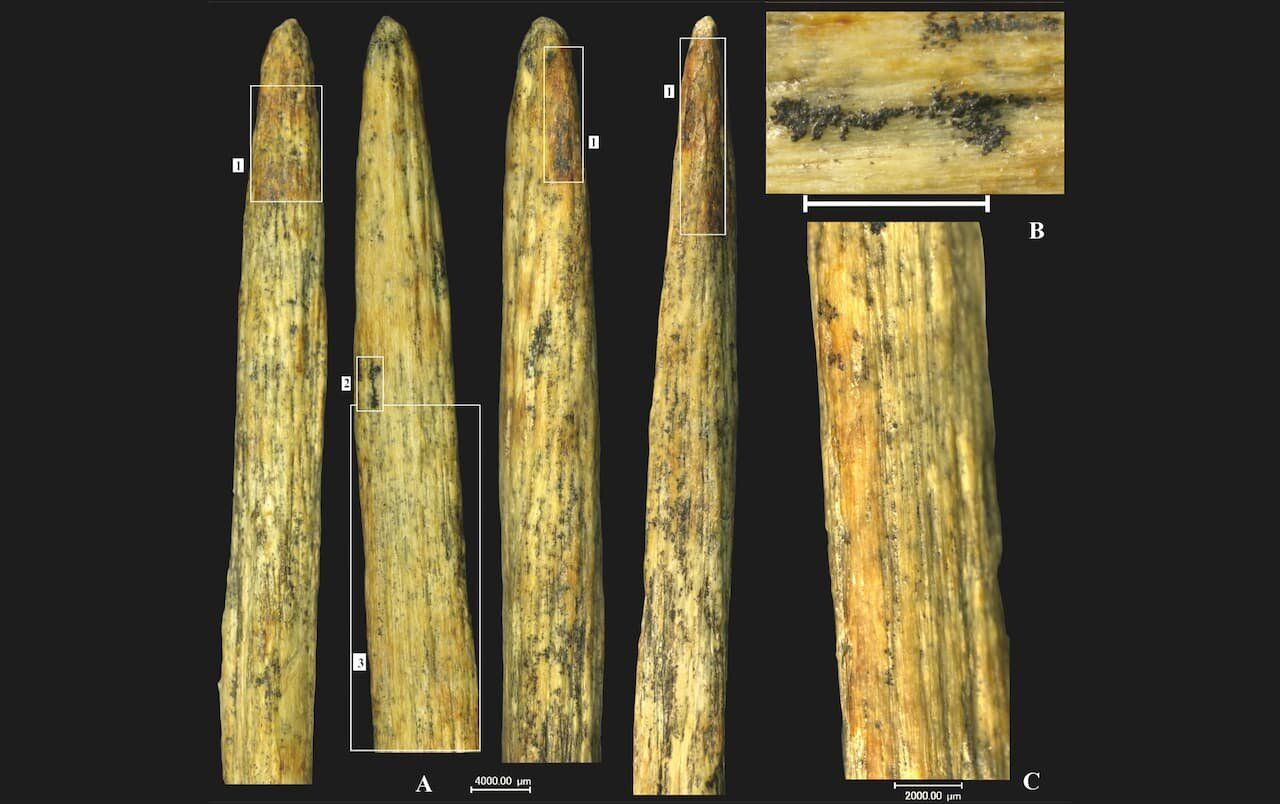Discovery of an ancient weapon in Russia not created by our species 🦴
Published by Cédric,
Article author: Cédric DEPOND
Source: Journal of Archaeological Science
Other Languages: FR, DE, ES, PT
Article author: Cédric DEPOND
Source: Journal of Archaeological Science
Other Languages: FR, DE, ES, PT
Follow us on Google News (click on ☆)

Four photographs of the conical part of the sample. The numbered white rectangles indicate:
1 – reddish-brown discoloration areas, similar to those caused by heat at the tip;
2 – the location of the embedded photograph showing bitumen residues.
Credit: Liubov V. Golovanova et al.
According to a study published in the Journal of Archaeological Science, this 70,000 to 80,000-year-old artifact confirms that these hominids crafted sophisticated projectiles long before our ancestors. Analyses reveal an optimized design for hunting, with traces of hafting and repair.
An independent innovation
The tip, carved from a bison bone, shows striations revealing the use of stone tools for shaping it. Bitumen residues indicate it was attached to a wooden shaft, a technique requiring meticulous preparation. These elements suggest knowledge transmission across generations.
Fractures observed at its tip confirm its use for striking a hard target, likely game. Unlike more common stone tools, this type of organic weapon rarely survives, explaining its scarcity in excavations.
The absence of prolonged wear suggests the object was used briefly before being abandoned or lost. The stable environment of Mezmaiskaya Cave allowed its exceptional preservation.
A Neanderthal workshop
The site has yielded other clues of craft activities: flint tools, hearths, and remains of hunted animals. These discoveries paint a picture of an organized group efficiently exploiting local resources. Mastery of fire for hardening bone and producing tar reinforces the image of advanced technical skills.
Comparisons with later Homo sapiens spear tips show similarities in shape but distinct methods. This technological independence highlights Neanderthals' adaptability, capable of innovating without contact with other species.
For researchers, this find adds to other recent evidence, such as bone tools from Siberia, illustrating a long-underestimated cultural diversity.